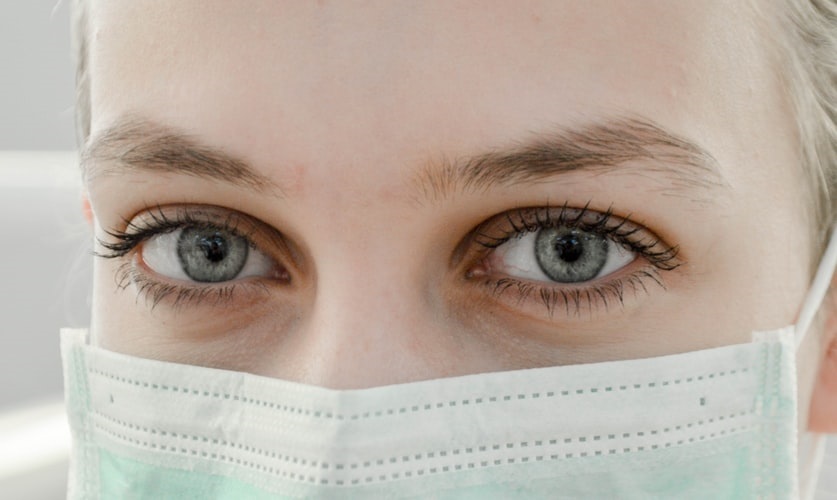With the Covid-19 virus making headlines all around the world right on the heels of the Australian bush fires, people have been going crazy with face masks. Using these masks is beneficial given the current state of things, and it’s not necessarily to avoid viral infections. Even without a virus going around, face masks have another important function: they keep your respiratory system safe from hazardous pollutants that can have a negative effect on your health.
Face masks are a safety tool known as Personal Protective Equipment (PPE). In the occupational health and safety industry that refers to equipment which you use as a last resort when you have to do an activity that can pose health or safety risks. They are not meant as a first line of defense, they are actually supposed to be the final line of defense. The most effective defense against hazards is to avoid them entirely. We use PPE when that is not an option.
Since the very air we breath has become the hazard, we have no choice but to use PPE gear like face masks when we go outside our homes. If you are at home you can control the quality of the air in your house, but when out and about face masks can mean the difference between good health and problematic chronic issues.
A face mask is a type of air-purifying respirator. There are two types of respirators: the former that cleans hazardous air (like face masks) and the ones that provide an alternate clean supply of air (think oxygen masks) known as air-supplied respirators.
Here’s what you need to know about face masks.
Masks are Rated on Filtration Capability
Masks are rated based on how much harmful substances they can filter out. You are probably familiar with the N95 mask, as this is the most commonly-recommended mask to get. This mask is actually rated according to the NIOSH Air Filtration Rating system. The National Institution for Occupational Safety and Health standardized the rating for masks in the United States.
The rating comprises of a letter (either N, R or P) and a number (either 95, 99 or 100).
- The N stands for “Not Resistant to Oil.” R is “Resistant to Oil” while P is “Oil Proof.”
- The number is the minimum level of efficiency at filtration. A 95 means that the mask can filter out 95% of all common hazardous materials in the air up to 3 microns. A 99 rating filters out 99%, while 100 protects you from 99.97% of all particulates and other hazards.
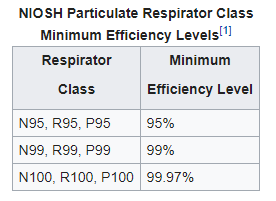
Source: https://en.wikipedia.org/wiki/NIOSH_air_filtration_rating
The N95 face mask is good enough to protect you from the majority of particulates in the air, so you are safe from PM10 and PM2.5 pollutants.
The European rating system is different. Known as the EN 143 standard, this rating system defines masks which have a filtration system attached to the mask. The categories are:
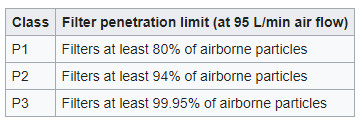
The P2 rating is of roughly the same performance as the N95 mask.
There is a separate standard called EN 149 which refers to larger half or full masks which are constructed for heavier duty filtration. These are called “FFP” for “Filtering Facepiece” and also measure the inward leakage between the mask and the face. This is because these masks use valves to aid in respiration.

Valves are a Welcome Feature
One of the things you’ll note with the N95 face mask: it is not often recommended for use with the elderly and with young children. Why? It’s because it’s actually pretty difficult to breathe using one. You have to exert a certain amount of effort with your lungs to breath. For most adults it’s not a big deal, but for the elderly or young children it can be too taxing on their respiratory system.
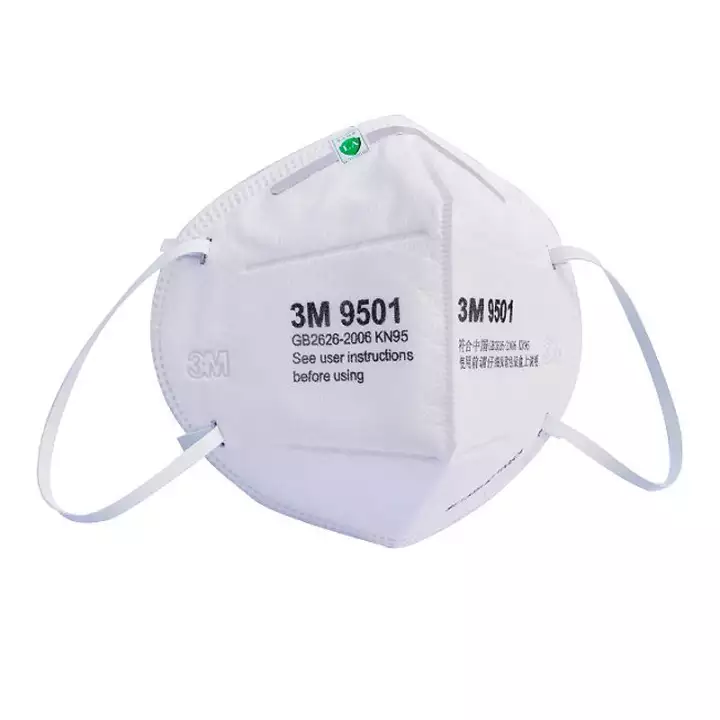
The 3M N9501 respirator is the most commonly-recommended mask today, but the common and affordable model, the it doesn’t have an intake valve. You may want to opt for a model with a valve to make breathing easier. 3M offers a different line called the Aura Particulate Respirators which feature a valve technology for easier breathing. They market this as Cool Flow™. One such model is the 3M 9211, an N95 mask but with a valve for easier respiration.
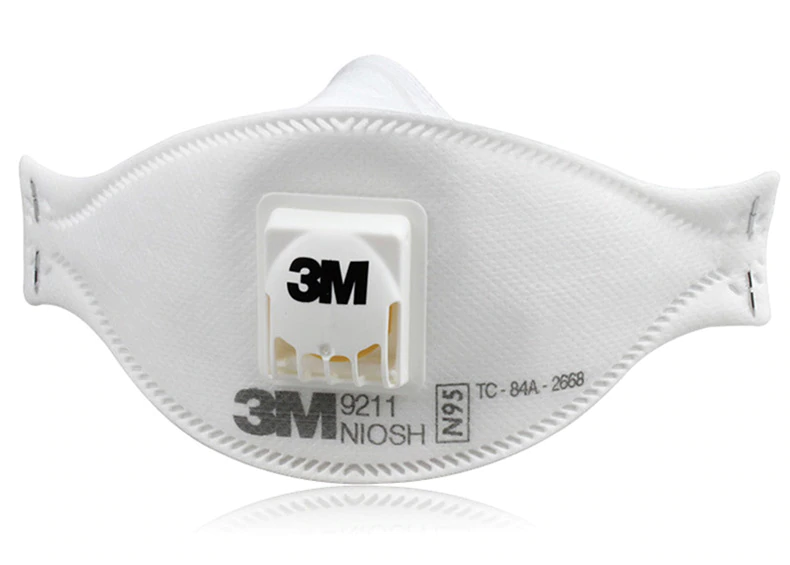
Be sure to choose the proper mask for your needs. Other brands like Respro offer masks that are suitable for active urban lifestyles, featuring large intake valves that can supply the airflow a runner would need while going for a morning jog.

Face Masks are not a 100% Guarantee
Don’t be too confident in how they can protect you from pollutants. Depending on the size and shape of your face and the amount of activity you undergo that can break the seal on your face, the mask can suffer up to 68% leakage.
This is why the fit of the mask is crucial, as well as following the proper instructions for use and putting them on. Always be sure to read the instructions for your mask carefully, including how often it can be used. Many N95 masks are designed for single-use and should be discarded afterwards as their filtering efficiency is greatly reduced afterwards. Instructions on proper fit are important, as you defeat the purpose of the mask if it comes lose and lets you breathe in the particulates and pollutants you are trying to filter out.
And always remember, the best defense is to avoid hazardous situations in the first place. Again, face masks are the last line of defense, to be used because you do not have the option to forego going outside of the home. Children need to go to school to learn, and adults need to go to the office to do their jobs. Discretion is advised, and if you can avoid going out and exposing yourself to compromised air, that would be the most effective solution of them all.

